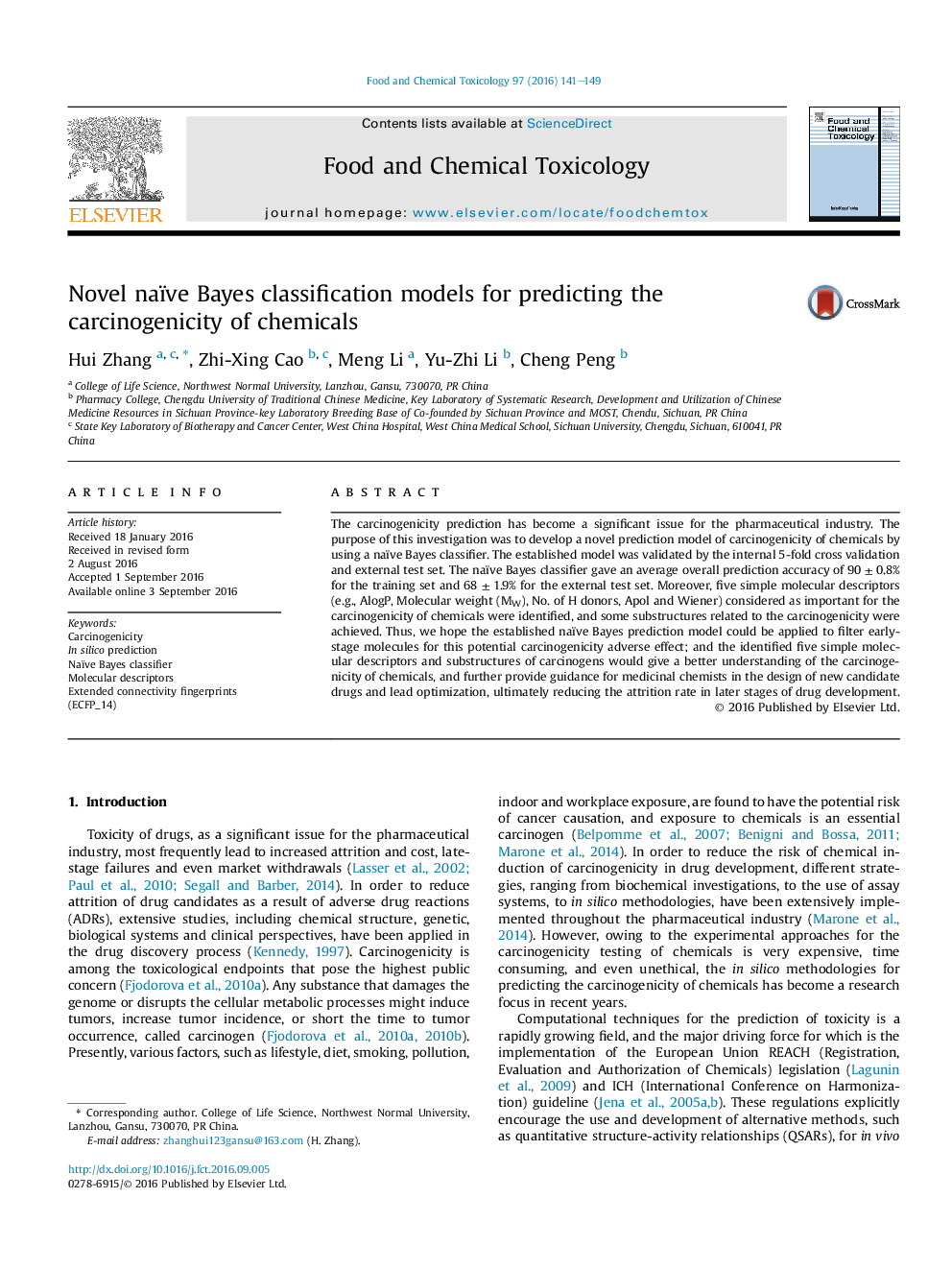| کد مقاله | کد نشریه | سال انتشار | مقاله انگلیسی | نسخه تمام متن |
|---|---|---|---|---|
| 2584832 | 1561747 | 2016 | 9 صفحه PDF | دانلود رایگان |
• The carcinogenicity prediction has become a significant issue for the pharmaceutical industry.
• A novel prediction model of carcinogenicity of chemicals was developed by using a naïve Bayes classifier.
• Five molecular descriptors considered as important for the carcinogenicity were identified.
• Substructures for carcinogenicity were produced by ECFP_14 fingerprints.
The carcinogenicity prediction has become a significant issue for the pharmaceutical industry. The purpose of this investigation was to develop a novel prediction model of carcinogenicity of chemicals by using a naïve Bayes classifier. The established model was validated by the internal 5-fold cross validation and external test set. The naïve Bayes classifier gave an average overall prediction accuracy of 90 ± 0.8% for the training set and 68 ± 1.9% for the external test set. Moreover, five simple molecular descriptors (e.g., AlogP, Molecular weight (MW), No. of H donors, Apol and Wiener) considered as important for the carcinogenicity of chemicals were identified, and some substructures related to the carcinogenicity were achieved. Thus, we hope the established naïve Bayes prediction model could be applied to filter early-stage molecules for this potential carcinogenicity adverse effect; and the identified five simple molecular descriptors and substructures of carcinogens would give a better understanding of the carcinogenicity of chemicals, and further provide guidance for medicinal chemists in the design of new candidate drugs and lead optimization, ultimately reducing the attrition rate in later stages of drug development.
Figure optionsDownload as PowerPoint slide
Journal: Food and Chemical Toxicology - Volume 97, November 2016, Pages 141–149
